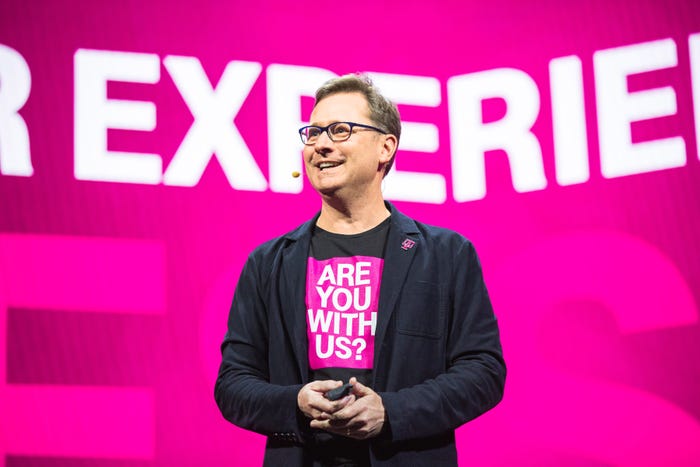FirstNet Authority validates AT&T completion of initial NPSBN five-year buildoutFirstNet Authority validates AT&T completion of initial NPSBN five-year buildout

AT&T completed its initial five-year buildout of the FirstNet nationwide public-safety broadband system (NPSBN) “on time, on budget,” based on validation by FirstNet Authority personnel conducted throughout much of this year, according to FirstNet Authority board President Richard Carrizzo.
Carrizzo made the announcement about AT&T’s nationwide buildout of the NPSBN on the 700 MHz Band 14 airwaves—spectrum licensed to the FirstNet Authority—during today’s FirstNet Authority board meeting, which was conducted in Nashville, Tenn.
“We recently completed our validation and verification of AT&T’s initial buildout of Band 14 spectrum for the radio access network in all states, territories and Washington, D.C.,” Carrizzo said during the board meeting, which was webcast. “This development of public safety’s Band 14 spectrum is a tremendous achievement—the initial build of the FirstNet network was done on time, on budget, and on task.”
AT&T announced in April that it had completed the deployment of the initial five-year Band 14 buildout of FirstNet in late March, but FirstNet Authority officials had not validated the work publicly until today.
Jim Bugel, president of AT&T’s FirstNet business unit, expressed optimism about the future development of the NPSBN for public-safety users in partnership with the FirstNet Authority.
“We are honored to work side-by-side with public safety and the First Responder Network Authority in building America’s only purpose-built first-responder network,” Bugel said in a prepared statement provided to IWCE’s Urgent Communications. “AT&T remains focused on our work to continually innovate, evolve and expand public safety’s critical-communications capabilities. The future is bright for reliable public-safety communications on their own nationwide network
“We appreciate the First Responder Network Authority’s diligence throughout the verification review and look forward to growing our strong partnership in keeping first responders mission-ready, so they can best serve their communities for decades to come.”
The FirstNet Authority formally contracted AT&T to build and maintain the NPSBN in March 2017, but most of the efforts that year revolved around the development of FirstNet buildout plans by 50 states, 5 territories and Washington, D.C. By the end of 2017, the governors for all 56 of these jurisdictions decided to forego an “opt-out” option and let AT&T deploy the NPSBN with their borders, in accordance with the state buildout plans.
FirstNet Authority board member Jocelyn Moore—chair of the board’s programs and future planning committee—said the organization’s staff verified that AT&T completed all of Band 14 buildout plans in these jurisdictions.
“Our contract-oversight team has now completed their validation and verification activities related to the final operational capacity milestone for our initial Band 14 radio-access-network buildout,” Moore said during the board meeting. “100% of our contract rural and non-rural milestones have been verified, as well as all state commitments that were agreed upon during the opt-in process. They have been confirmed as complete and delivered by AT&T.”
At the end of March 2018, the FirstNet Authority formally issued a task order that directed AT&T to deploy the initial NPSBN buildout on the 20 MHz of Band 14 spectrum in phases, with the final phase being completed by the end of March this year—a timetable that AT&T met. In fact, AT&T was as much as nine months ahead of schedule for much of the NPSBN buildout, but officials at the carrier noted that the final 5% of the work was the most difficult and time-consuming part of the deployment, so meeting the March 2023 deadline was not a trivial task.
While AT&T has completed the initial planned buildout of the NPSBN, Carrizzo emphasized that the NPSBN will continue to evolve throughout the remainder of the 25-year contract with AT&T that is not scheduled to expire until March 2042.
“We are proud to announce the initial buildout is fully complete, although, as we know, there is still much work ahead of us,” Carrizzo said, “We’re only five years into our contract, and this network will continue to progress, by the [direction of the FirstNet Authority] board.
“As we’ve said before, the initial buildout was just that—the beginning. It’s our foundation. You must always have a foundation for any building and house. The boards before us and this board have built that strong foundation, as the future boards will continue to build the house and the full network.”
Moore echoed this sentiment.
“This certainly does not mean that we’re done investing in Band 14 coverage,” Moore said. “We will be continually adding new Band 14 over the coming years.”
When the law creating the FirstNet Authority was enacted in 2012, many observers questioned whether Congress had given the fledgling organization had given enough resources to complete the task of building an LTE-based public-safety network that would provide nationwide coverage and be financially self-sustaining.
Indeed, Congress allocated $7 billion to the FirstNet Authority, which was a massive figure for public-safety communications but only a fraction of the $50 billion to $80 billion some estimated a new commercial nationwide LTE network would cost—much less a system with additional coverage needed by public safety.
Congress also directed the FCC to license 20 MHz of 700 MHz spectrum—now known as Band 14—to the FirstNet Authority, which proved to be critical in the NPSBN business model.
In 2016, the FirstNet Authority offered up to $6.5 billion and access to the Band 14 spectrum to bidders willing to build and maintain a nationwide public-safety LTE network for 25 years. Notably, the RFP document included a significant financial wrinkle for a government procurement—the winning bidder would pay annually for access to the 700 MHz Band 14 airwaves, providing the FirstNet Authority with a steady stream of revenue throughout the life of the contract.
Three entities submitted bids, and AT&T formally was announced as the contractor in March 2017, although AT&T had been identified in legal documents as the apparent winner several months earlier.
In its bid, AT&T agreed to pay the FirstNet Authority $18 billion for its access to the Band 14 spectrum throughout the 25-year contract period. About $3 billion of that money is expected to fund the FirstNet Authority’s ongoing operations, so the FirstNet Authority board ultimately is expected to have about $15 billion in available funds that it must invest into improving the NPSBN before the contract expires in 2042.
Upon being selected as the NPSBN contractor, AT&T immediately announced that subscribers to the FirstNet system not only would enjoy priority and preemption rights on the Band 14 network when it was built—a condition of the contract—but they would enjoy those same rights across all of AT&T existing commercial LTE systems.
AT&T’s voluntary agreement to leverage its commercial LTE network and spectrum bands let the FirstNet product be marketed relatively quickly, as opposed to waiting years for significant portions of the Band 14 deployment to be finished. As of the end of the September, FirstNet supports more about 27,000 public-safety agencies with about 5.3 million connections, according to AT&T.





